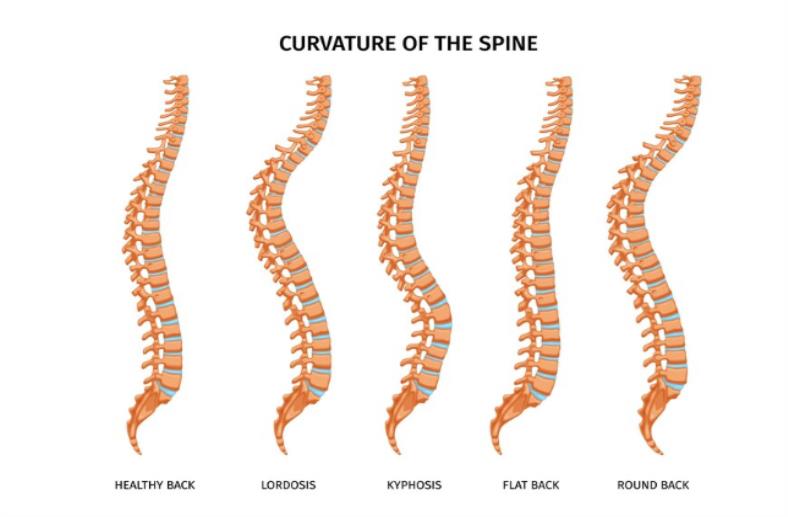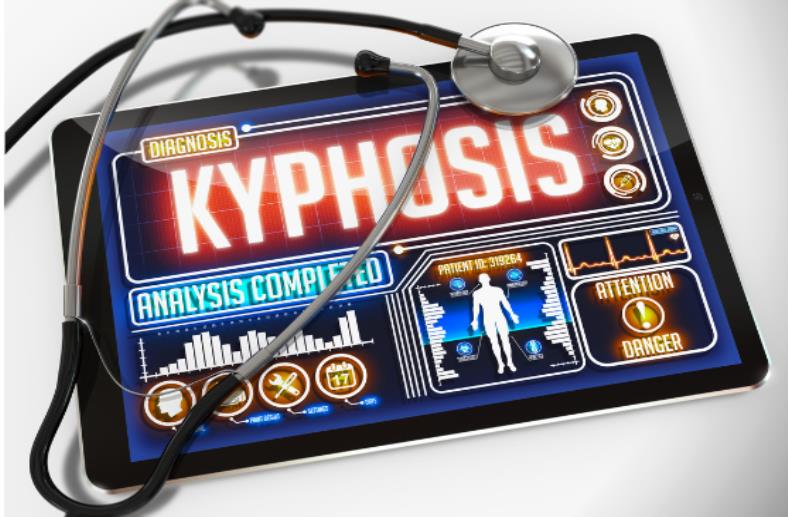Kyphosis is a spinal disorder characterised by an excessive outward curvature of the spine, causing hunching of the back. It’s commonly associated with ageing but can occur at any age due to varied reasons.
The condition is a chronic autoimmune disorder in which the body attacks its healthy tissues, causing inflammation and damage. Symptoms may vary from mild discomfort to serious, debilitating health issues, depending on the affected organ or system.
Understanding the Anatomy of the Spine
Overview of spinal structure
The spinal structure, or vertebral column, is a robust supportive structure in our body, comprising 33 vertebrae. It provides structural stability, encases the spinal cord, and facilitates flexible movement. It is separated into five regions: cervical, thoracic, lumbar, sacral, and coccyx.
Impact of spinal curve abnormalities
Spinal curve abnormalities, like scoliosis or kyphosis, can significantly impact an individual’s quality of life. They can cause chronic pain, breathing issues, reduced physical ability, and even psychological distress due to cosmetic concerns.
Causes of Kyphosis
Congenital kyphosis
Congenital kyphosis is a spine condition present at birth where the spinal column fails to develop normally, resulting in a forward curvature. This can lead to severe spinal deformities and neurological complications.
Postural kyphosis
Postural kyphosis, a common spinal condition, is characterised by an abnormal curve in the upper back, resulting in a slouched or hunchback posture. Often caused by poor posture or prolonged slouching, it’s typically manageable and correctable with physical therapy and postural exercises.
Scheuermann’s kyphosis
Scheuermann’s kyphosis is a spinal disorder typically occurring during puberty that causes abnormal upper spine curvature. It results in a rounded or hunched appearance, back pain, and potential breathing issues. Treatment options include physiotherapy, bracing, and occasionally surgery.
Osteoporosis-related kyphosis
Osteoporosis-related kyphosis is a spinal condition characterised by forward curvature of the spine, causing a hunchback appearance. It results from bone thinning and weakening due to osteoporosis, commonly affecting older adults, particularly women.
Symptoms of Kyphosis
Mild kyphosis symptoms
Mild kyphosis symptoms include a noticeable curve in the upper back, mild back pain, stiffness, and fatigue. Sometimes, the condition might not cause any noticeable symptoms or discomfort. Regular monitoring is advisable.
Severe kyphosis symptoms
Severe kyphosis symptoms include a pronounced curve or hump in the upper back, back pain, and stiffness. Difficulties in breathing and eating due to a compressed chest area can also occur. Fatigue and tenderness are common.
Associated health complications
Associated health complications often refer to issues that arise as a result of an existing health condition. This may include heart diseases resulting from obesity, kidney damage from diabetes, or mental health disorders due to chronic stress.

Diagnosis and Evaluation of Kyphosis
Physical examination
A physical examination is a routine medical procedure where a healthcare professional thoroughly checks a patient’s body to determine their overall health condition and diagnose any potential diseases or medical conditions.
X-rays and imaging tests
X-rays and imaging tests are essential diagnostic tools in medicine. They allow physicians to visualize the internal structures of the body, aiding in identifying abnormalities, fractures, tumours, and internal damage, thus facilitating appropriate treatment.
Assessment of medical history
Assessment of medical history is a crucial step in healthcare. It involves documenting a patient’s past and present health issues, family health history, medications, allergies, and lifestyle habits. This information guides appropriate and personalized treatment plans.
Treatment Options for Kyphosis
Non-surgical treatments
Non-surgical treatments refer to non-invasive medical procedures used to treat various health conditions. These include medications, physical therapy, chiropractic adjustments, acupuncture, and lifestyle changes. They are typically less risky and have shorter recovery times than surgical procedures.
Physical therapy
Physical therapy is a healthcare field specializing in the evaluation and treatment of physical human body ailments. Therapists use specialized techniques to rehabilitate injury, improve movement, and manage chronic pain aiming for overall wellness improvement.
Pain management and medications
Pain management involves applying various medical approaches to prevent, reduce, or stop pain sensations. Medications, ranging from over-the-counter analgesics to prescription drugs, play a critical role in alleviating different types of pain efficiently.
Use of braces
Braces are orthodontic devices used to correct dental issues such as crooked teeth, overcrowding, overbites, and underbites. They realign teeth by applying constant pressure over time, improving oral health, and enhancing smiles. Regular visits to the orthodontist are required.
Surgical treatments
Surgical treatments involve removing or repairing body parts using invasive procedures performed by skilled medical professionals. These can be life-saving, improve quality of life, or be cosmetic, spanning a wide range of medical fields.
Spinal fusion
Spinal fusion is a surgical procedure used to correct issues with the small bones in the spine, or vertebrae. It involves joining two or more vertebrae together to immobilise that part of the spine and relieve pain.
Osteotomy
Osteotomy is a surgical procedure where a bone is cut to alter its alignment or length. It aims to correct bone deformities, improve joint function, and alleviate pain, often associated with osteoarthritis, fractures, or bone diseases.
Minimally invasive procedures
Minimally invasive procedures are surgical techniques that limit the size of incisions used, reducing damage to the body. These procedures often result in less pain, quicker recovery times, and a lower risk of infection than traditional surgery.
Ongoing management practices
Ongoing management practices refer to the systematic approach managers consistently use to provide direction, implement plans, and motivate people. These practices promote policy adherence, efficient processes, improved communication, and workforce development, ensuring an organization’s growth and success.
Living with Kyphosis
importance of regular check-ups
Regular check-ups are crucial for maintaining good health. They help identify potential health issues before they become serious and enable early intervention, therefore improving prognosis and reducing healthcare costs.
Techniques for managing symptoms
Effective management of symptoms involves multiple techniques, like medication, therapy, and lifestyle changes. Regular exercise, a healthy diet, stress management, and adequate sleep are key non-pharmacological strategies. Medical intervention may include medication or surgery, depending on the condition.
Support and resources are available
Numerous supports and resources are available for different needs, ranging from mental health services, financial aid, educational tools, and career guidance. Many organisations and websites provide accessible help and valuable information to individuals seeking assistance.
Kyphosis FAQs
Is kyphosis serious?
Kyphosis can be serious if the spinal curve is severe, potentially leading to significant discomfort, difficulty breathing, and nerve damage. It can affect posture and aesthetics, sometimes necessitating surgical correction. However, not all cases are serious or cause symptoms.
What does a person with kyphosis look like?
A person with kyphosis has an exaggerated, forward rounding of the back. It is most noticeable when viewed from the side as a hump in the upper back between the shoulders.
At what age do people get kyphosis?
Kyphosis primarily affects older adults, mainly those over the age of 40. However, it can also occur in teenagers or younger adults due to slouching, injury, or underlying health conditions.
Does kyphosis affect the heart?
Kyphosis, a spinal curvature condition, can potentially affect the heart. It can limit lung capacity, reduce oxygen levels, and put increased pressure on the heart, potentially leading to heart conditions.

